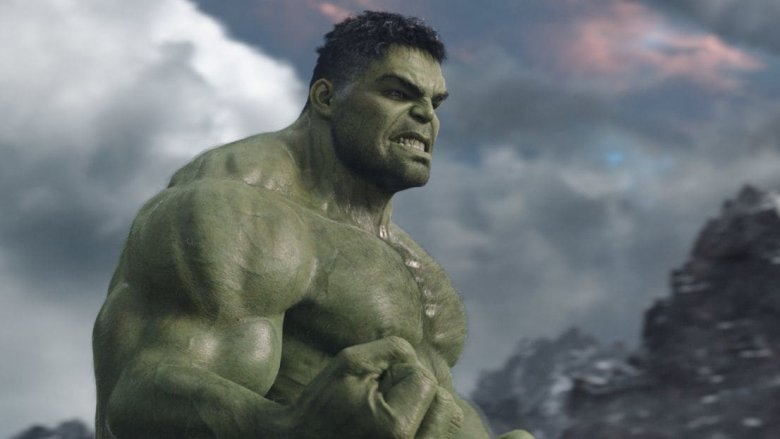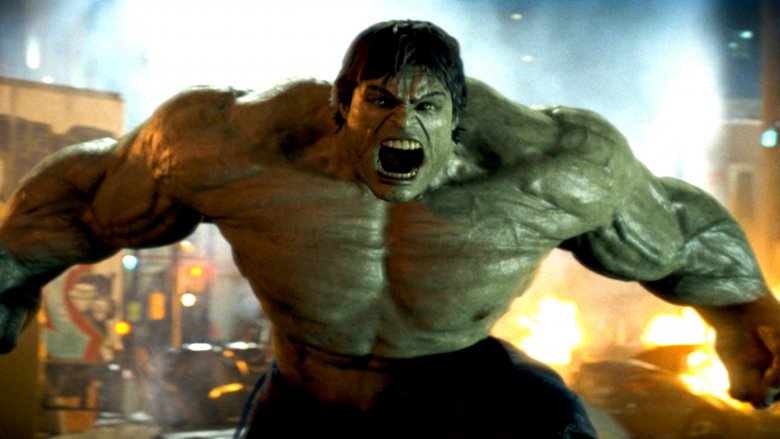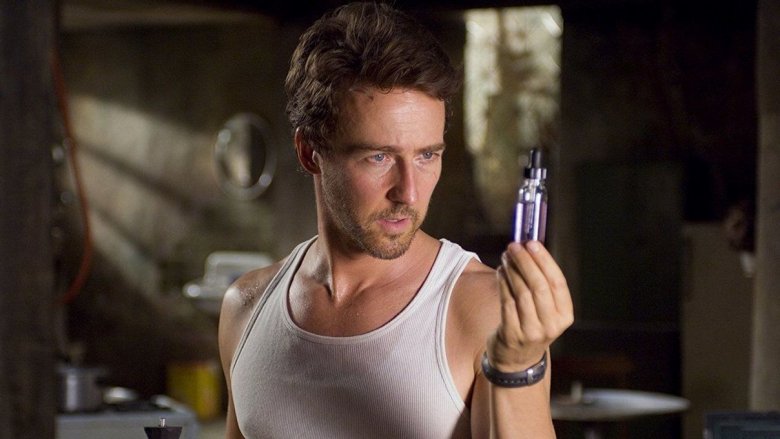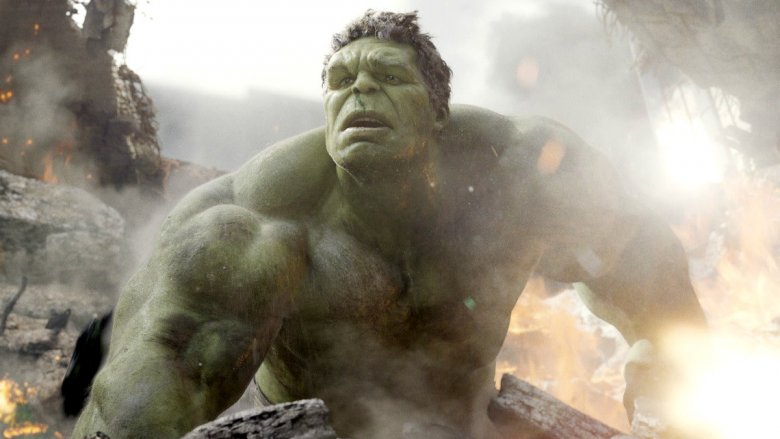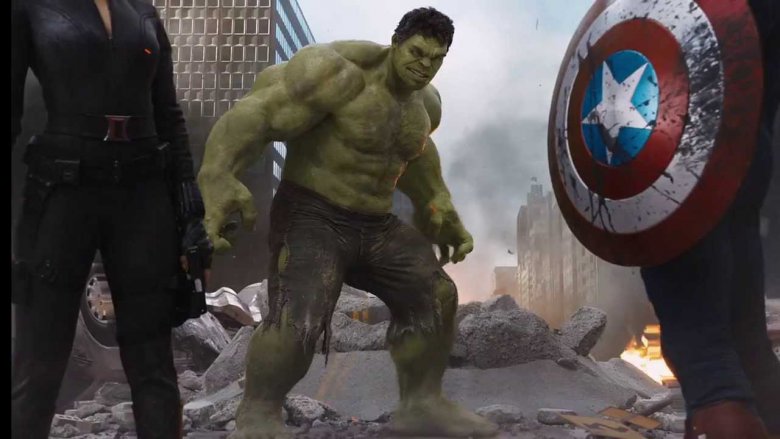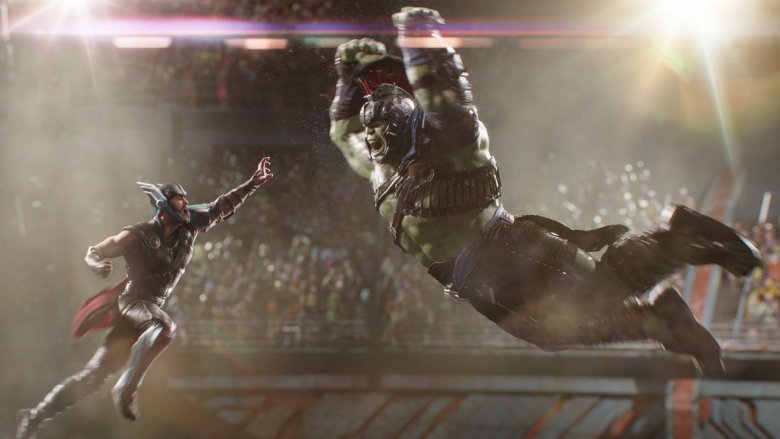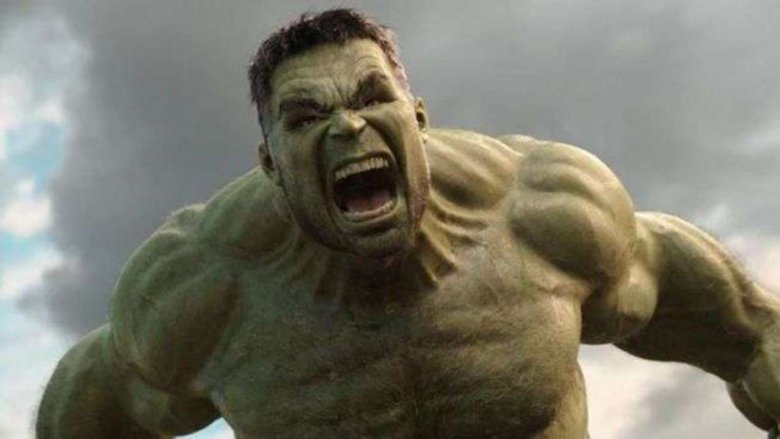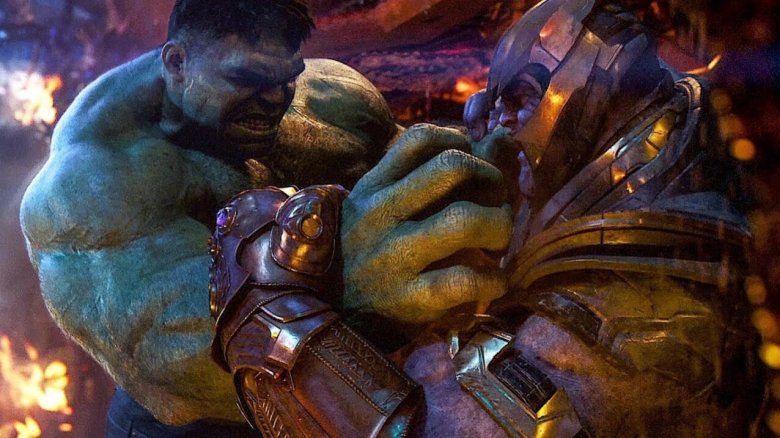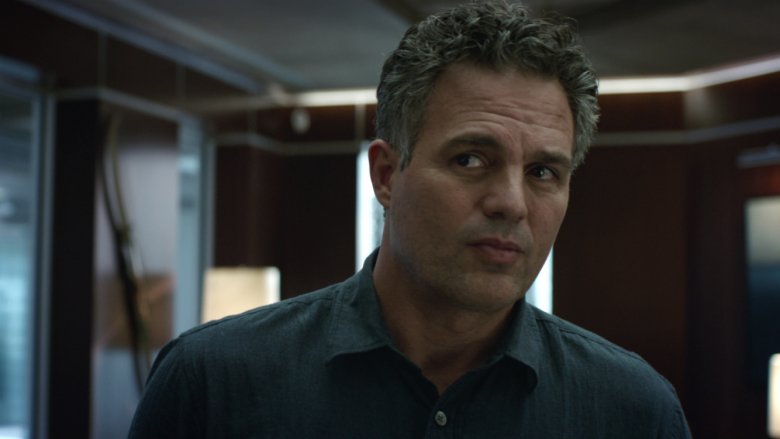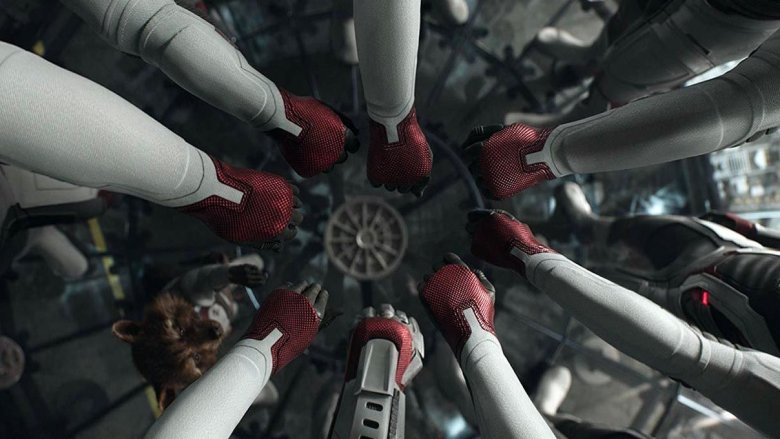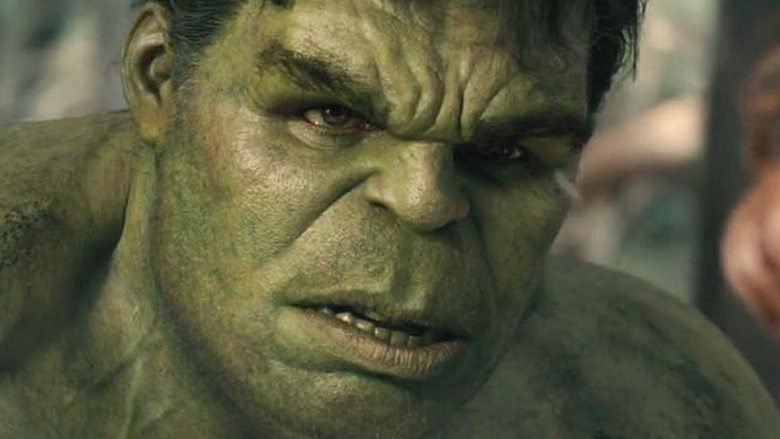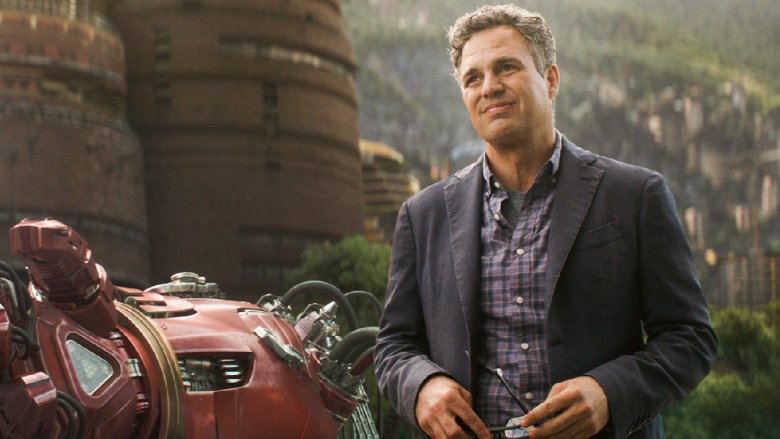The Incredible Hulk MCU Trilogy Finally Explained
The Hulk was the second hero to get an origin story in Marvel's Cinematic Universe. In fact, The Incredible Hulk came out mere months after Robert Downey Jr. made his debut as Tony Stark in Iron Man. Despite his longevity, though, the Big Guy's entire career has been dogged by issues. For instance, Hulk's "other half," Bruce Banner, is one of the only major MCU characters that has needed to be recast. The pair also pretty much had their story retconned in the aftermath of their solo film. And yet, the cinematic one-two punch of Hulk and Bruce Banner has remained a popular fan favorite, and after some significant earlier struggles, the characters have managed to make a comeback over the years.
In fact, whether they were cracking Chitauri skulls in New York City, going toe-to-toe with Thor on the helicarrier, or teaming up with Tony Stark to create Vision, Hulk and Banner have been a popular fixture in the MCU storyline for years. It wasn't until later films like Thor: Ragnarok and the third and fourth Avengers films, though, that the Hulk narrative was really let off the leash, and the effect was sensational. With Avengers: Endgame officially in the books, it's finally possible to trace Hulk's MCU storyline from its shaky beginnings to the triumphant three-story arc that ended in the fourth Avengers film.
The not-so-incredible Hulk
Hulk kicked things off back in 2008 with The Incredible Hulk. The story wasn't a bad one but, well, it wasn't a great one, either — especially considering the caliber of so many of the Marvel movies that have come since. Part of the issue with Hulk's non-starter of a start in the MCU was the fact that the movie picked up partway into the story and proceeded to go... nowhere.
The movie begins with Banner after he has already become the Hulk, skipping right over the gamma radiation incident in the process. Of course, that doesn't automatically equate to a negative — Captain Marvel does the same, jumping right into an already developing story. The difference is that Carol Danvers' film circles back around to show how she got her superpowers. The Incredible Hulk charges ahead, assuming everyone knows about the whole gamma thing.
Things still could have turned out alright if the film had ended in a good place, but, once again, it drops the ball. The climactic fight against Abomination is fun, and the movie ends with Banner finally coming to terms with Hulk... which would have been great, if they didn't retcon it entirely by the time Avengers came around — which they did.
A hot mess
The meandering storyline is just the beginning of The Incredible Hulk's problems. Another issue throughout the film is its excessively serious nature, which contrasts starkly against Iron Man's light, witty tone. Edward Norton's version of Bruce Banner is sulky, serious, and depressed. While the character is certainly an improvement over the version seen in Ang Lee's Hulk, which came out half a decade earlier, it just doesn't fit the then-newly minted MCU tone. From the serious conversations to the overall muted colors, the movie feels like it belongs in an entirely different universe than that of Tony Stark.
Another complication that surfaced after the fact was the growing tension between Edward Norton and Marvel Studios. That's not to say that Norton wasn't committed to the role — on the contrary, the Academy Award-nominated actor had brought a lot of vision and depth to the character. But when the rubber hit the road, things just didn't jive well behind the scenes. In the ensuing fallout, the actor and the studio parted ways — not on the most pleasant of terms — and Hulk found himself at a new crossroads.
The Universal factor
While characters like Spider-Man, the X-Men, and the Fantastic Four have all had clear cut rights issues over the years — many of which have been ironed out over time — one stubborn conundrum that has refused to resolve itself is the question of the rights to the Hulk character. To put it as simply as possible, the rights to Hulk are "split" between Marvel and Universal.
Marvel Studios is allowed to use the Hulk character in its movies, a right they regained back in 2005, after Universal failed to pull the trigger on a sequel to Ang Lee's Hulk. However, Universal still retains the "right of first refusal" for any solo Hulk film. This allows them to distribute (and profit from) any Hulk movie that's made. That complicating little concern — along with the fact that The Incredible Hulk performed relatively poorly at the box office — helped push Marvel to abandon the thought of making another Hulk movie. When all things were taken into consideration, it just wouldn't be worth the time and effort compared to other projects.
Finding another way
While his first MCU foray seemed to peter out after one film, Hulk would eventually get a second chance. Distribution rights may have made for tough sledding with a Hulk solo movie, but over the following years, Marvel rehabilitated the Jade Giant by utilizing him as a stellar supporting character. This began with the wise move of casting Mark Ruffalo for the role. The actor instantly won over the hearts of the fans when he arrived on screen. Banner's MCU storyline was also largely reset — he once again didn't get along with Hulk and was clearly scared of letting "the Other Guy" get in the driver seat.
The Banner/Hulk combo made a big splash with audiences in Avengers, leading to the decision to have Banner pop in for a quick "counseling" session with Tony Stark in the post-credits scene for Iron Man 3. The pair showed up again in the second Avengers film, in which they both play a major role in bringing down the apocalyptic threat of Ultron. However, at that point in the franchise, they were still pretty much just supporting players in an ever-growing universe.
It wasn't until 2017 that CinemaBlend reported that Ruffalo and Marvel boss Kevin Feige had sat down to chat about Hulk's future in the MCU. The results of the conversation would change everything yet again — they decided to give him his own "special trilogy."
From Ultron to Ragnarok
Feige and Ruffalo's conversation ended up boiling down to a single Hulk storyline that would be split up over the course of three other characters' movies. The plan was perfect. It side-stepped the distribution issues by avoiding casting Hulk as a titular character in any of the three films, but it still allowed for plenty of time to create a character arc with a meaningful impact — something Hulk hadn't experienced up to that point.
Things kick off at the very end of Avengers: Age of Ultron, with Hulk flying off in the Avengers' Quinjet. From there, he remains safely tucked away in space as the events of five more Marvel films pass by — including Captain America: Civil War, in which his old nemesis, Secretary of State Thaddeus Ross, raises the question of his whereabouts. The Infinity Saga narrative doesn't reconnect with the Green Machine live and in the flesh until Thor: Ragnarok, in which the "Lord of Thunder" discovers his "Friend from Work" on the garbage planet of Sakaar. From there, it's finally explained that Hulk had arrived on the planet two years earlier (at least according to Earth time), having since gone on to become the Grandmaster's gladiatorial champion. Critically, he had also been the Hulk that entire time.
The Revenger
Hulk's presence throughout Ragnarok is a perfect compliment to Thor's story. And yet, at the same time, it also serves as a vehicle to propel his own story through the first third of its "three-movie-arc." After their electrifying first encounter in the gladiatorial arena, the two friends have a long, enlightening, and downright hilarious conversation that shows a new side to Hulk's character. While he's still very rough around the edges, the Big Guy has clearly matured quite a bit during his tenure on Sakaar.
Over the course of their conversation, Hulk talks in full sentences and reveals his attachment to his new, Banner-free life. Nevertheless, shortly afterward, the pair visit the Quinjet, where a recording of Natasha Romanoff helps Banner regain control for the first time in years. From there, the good doctor joins the newly-minted team of "Revengers" and heads off to Asgard to help Thor unseat Hela.
It's here, on Asgard, that the first portion of the character's "trilogy" concludes. While it's easy to highlight things like Hulk taking on Fenris and jump-smacking Surtur, though, probably the most heroic moment of the entire movie comes when Banner willingly lets Hulk regain control — with no guarantee of ever coming out again — in the name of saving Asgard. The film ends with the character still Hulked out and on the ship with the surviving Asgardians, headed for Earth.
The Infinity War dilemma
Things quickly went south upon the release of Avengers: Infinity War the following year. The third Avengers film opens with the Asgardian ship already overrun by Thanos, and within the first few minutes, Hulk is in the thick of it. But this time, things don't go according to plan, and the Green Machine ends up down for the count after taking a few clever blows from his savvy opponent. At that point, Heimdall uses his last strength to summon the Bifrost and send Hulk hurtling back to Earth, where he arrives in NYC, back in Banner form. From then on, Hulk refuses to join in the fight.
Fans believed that Hulk might play a bruising, muscle-bound part in the fight against Thanos, but the deliberate withdrawal of the character after the opening scene ultimately makes his arc that much more interesting. The truth is, Hulk had been little more than a pawn in the Avengers' plans up until this point, only being whipped out to save the day when danger was about to strike. His time on Sakaar gave him a taste of freedom, and the Big Guy liked it.
And we're not just talking about conjecture here, either. Co-director Joe Russo explained it best when he said, "People speculated whether there was some fear on the Hulk's part about having to face Thanos again. But I think ultimately it's that he's tired of playing hero to Bruce Banner." 'Nuff said.
Headed for a showdown
In the lead up to Infinity War, Mark Ruffalo revealed in an interview that Bruce Banner and the Hulk were "headed for a showdown." While the hint seemed to point towards a violent conclusion, the rest of Hulk's three-part story actually ended up playing out in quite an unexpected way. Rather than simply being used as a plot device or to entertain smash-happy viewers, the pivotal moment for Hulk and Banner ended up being relatively quiet. Not only that, but it took place in between Infinity War and Endgame.
When audiences caught up with Hulk again early on in Endgame, they finally ran into "Professor Hulk." The long-awaited union of the two personalities is the result of 18 largely unexplained months in a lab, leading to a Banner/Hulk combo who "wears shirts now."
It's in the humorous diner scene, taking fan photos next to a flabbergasted Ant-Man, that the professor reveals that, after years of treating Hulk as a disease, he has finally come to terms with his superhero counterpart. While the transformative scene was originally meant for Infinity War, it ended up being a perfect way to launch the third and greatest portion of the dynamic duo's (we'll just call them Hulk from now on) three-part arc in Avengers: Endgame.
Adventures in time travel
A unified version of Hulk and Banner is a fun development on the character's own personal storyline, but that's not all. The newly-united Hulk ends up being one of the most important characters in the entire Endgame story. He kicks things off when he's tapped to head the Avengers' initial time travel efforts in the absence of Tony Stark.
While it may not be his scientific expertise alone that gets the team back to the past, the Big Guy's involvement in the time travel aspects of the movie set things up for some great comedic moments, and provide some critical exposition to boot. The scene where Hulk accidentally pushes time through Scott Lang rather than vice versa is hilarious, and Hulk's "either all of it's a joke or none of it is" attitude throughout the experiment is priceless.
But trying not to lose Lang in the 1950s isn't the only way that the Green Guy impacts the time heist. He also helpfully breaks down how MCU time travel works. In the scene where Hawkeye volunteers to test Stark's time travel setup, it's Hulk who explains that if you travel to the past, the present becomes your future, and so on.
A refined personality
As Endgame plays out, so does the third and final portion of Hulk's three-part-story arc. Looking back, it's difficult to believe that this is the same character who, just a handful of years earlier, had maintained a successful gladiatorial career a half a galaxy away. By Endgame, Hulk is refined, thoughtful, and caring. He sees his past self smashing his way through New York City and thinks it's "gratuitous."
The Banner part of his intellect also allows the Hulk character to finally interact as a normal adult human being. He's instrumental in convincing Thor to stop sulking and pick up Stormbreaker for another go at Thanos. He's also able to process the loss of Black Widow with the only physical damage from his sorrow being a bench he tosses into the water in grief.
Most important of all, it's Hulk who tracks down the Ancient One and ultimately convinces her to surrender the Time Stone willingly. Consequentially, Hulk is also the only one shown the negative effects that removing the Infinity Stones would have on time. This places the responsibility squarely in his giant green palms to make sure that everything gets put back in place upon their victory — which he very responsibly does.
Saving half of the universe
While the third portion of Hulk's three-movie story arc is packed with great stuff, there's one thing that stands out from all of the rest: reversing the snap. Ultimately, it ends up being Hulk and Hulk alone who wields Stark's Infinity Gauntlet and brings everyone back. It's an utterly selfless move, and one that Hulk probably wouldn't have volunteered for just a few years earlier. And yet, it's both the Hulk's and Banner's personalities at work, ready to sacrifice themselves, literally for the good of the universe.
The added fact that the radiation emanating from the gauntlet is "mostly gamma" lends a great touch of destiny that sets up the peak of Hulk's personal story as he puts on the gauntlet and snaps. To put it in his own words, it's like he was "made for this."
Hulk continues to play a part in the story from there. He holds up the destroyed rubble of the Avengers HQ to save Rocket and War Machine, and does his part in the ensuing battle. But really, the climax of his own arc comes when, regardless of the consequences, he snaps his fingers and makes sure that everybody comes home. It's nothing short of a beautifully triumphant, breathtakingly worthy way to end a story that began all the way back in the fading moments of Avengers: Age of Ultron.
